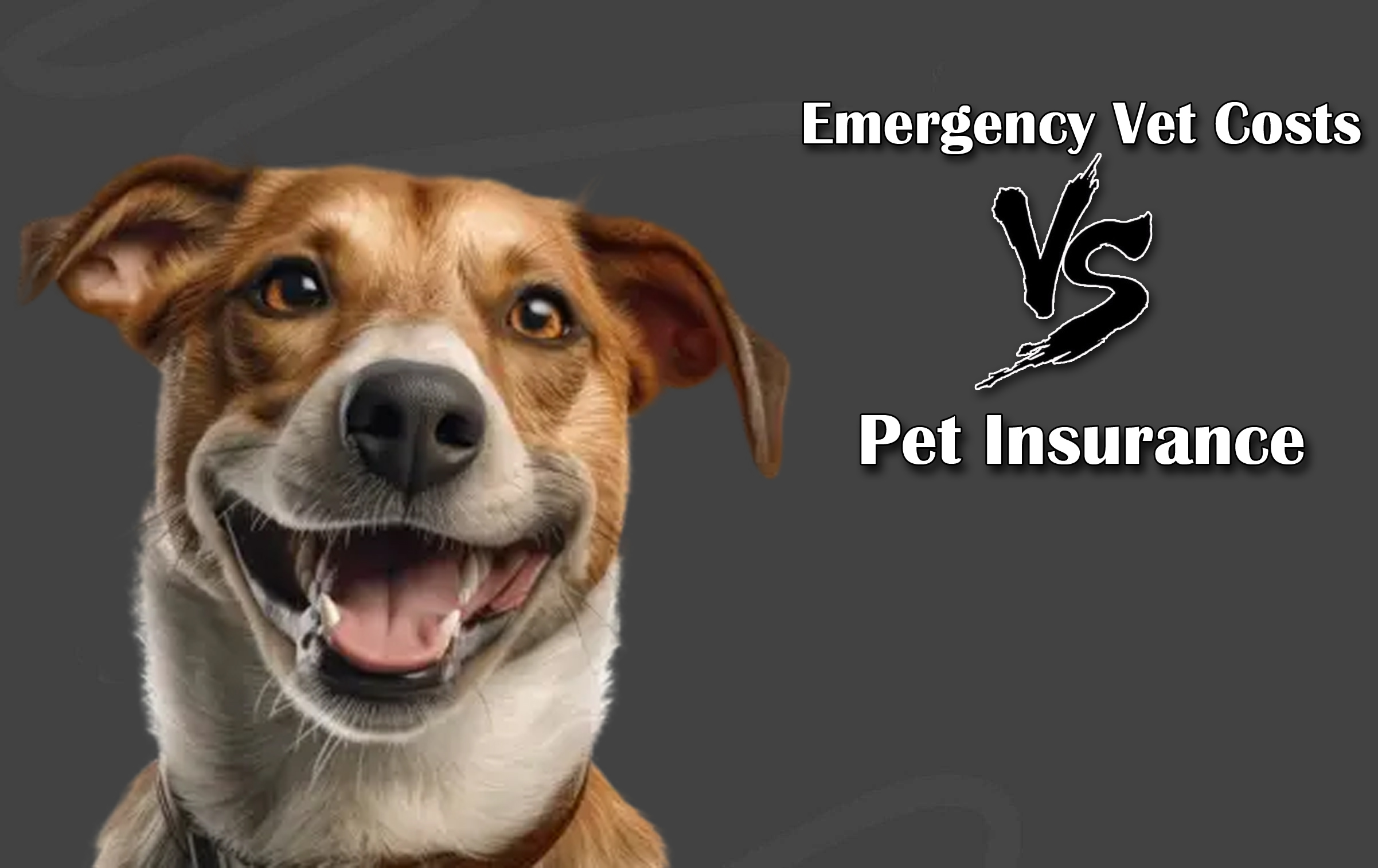
Emergency vet costs vs. pet insurance – Unfortunate and unplanned incidents like accidents, sudden illnesses, or unexpected medical conditions can happen at any random time.

These scenarios are impossible to predict and hence it messes wit the health and wealth of both the pets and its owners.
One of the most crucial decisions in these situations is how to pay for emergency veterinary care, which can sometimes come with a hefty price tag.
Veterinary care, especially emergency care, can be expensive. What’s more, without the right preparation, it can put a significant financial strain on pet owners.
In light of this, the pet insurance has become a popular solution for pet owners looking to safeguard their pets’ health while managing the potential costs of veterinary care.
While this insurance helps cover a wide range of medical expenses, including emergency vet visits, many pet owners are still unsure if it is worth the investment.
Emergency Vet Costs: What to Expect
Emergencies can strike at any time, and pet owners must be ready to handle whatever comes their way. Whether your pet has ingested something toxic, is injured in an accident, or suffers from a sudden health crisis, the need for emergency veterinary services is a real concern.
Furthermore, emergency vet clinics are typically open outside regular business hours, including nights, weekends, and holidays. This accessibility comes with a price, and it is often much higher than a standard vet visit.
Costs Of Emergency Vet
The cost of emergency veterinary care can vary greatly depending on several factors, such as your pet’s health, the severity of the emergency, the treatment required, and where you live.
The initial consultation fee at an emergency vet clinic often starts at $100 to $150, and additional costs for tests, diagnostics, medications, and treatments can add up quickly.
Additionally, it is important to note that many emergency veterinary clinics require payment upfront, which can be financially overwhelming for pet owners who are unprepared for such expenses.
This is where pet insurance can offer significant relief, as it can help mitigate the costs associated with emergency care.
However, before relying on insurance, it’s crucial to understand the limitations and exclusions that may apply, especially if the pet is already dealing with a pre-existing condition.
Pet Insurance: The Safety Net for Pet Owners
Pet insurance more often proves to be an invaluable resource for pet owners who want to ensure that their pets receive the necessary medical care without the worry of excessive costs.
Similar to health insurance for humans, pet insurance helps cover a portion of your pet’s medical expenses, including emergency visits, surgeries, medications, and diagnostic tests.
Also, this insurance policy varies widely in terms of coverage, cost, and exclusions, so it’s essential to research different plans before committing to one.
What Pet Insurance Covers
Typically, pet insurance policies cover treatments for illnesses, injuries, surgeries, and even preventive care in some cases.
The two most common types of pet insurance are accident-only coverage, which covers injuries caused by accidents, and comprehensive coverage, which includes both accidents and illnesses.
Depending on the policy, pet insurance can reimburse anywhere from 70% to 90% of eligible expenses, depending on the terms of the plan and the deductible you choose.
While pet insurance can help reduce the financial burden of emergency veterinary care, it’s important to understand the policy’s exclusions.
Additionally, most pet insurance companies won’t cover pre-existing conditions, and some may have waiting periods before coverage kicks in for certain treatments. To close it all, it is essential to read the fine print carefully.
Cost Comparison: Emergency Vet Care vs. Pet Insurance
When comparing the costs of emergency vet visits and pet insurance, it’s important to weigh both the short-term and long-term expenses.
While emergency vet care can be a significant financial burden in a single instance, pet insurance spreads the cost of care over time through monthly premiums, offering a more predictable and manageable expense.
Emergency Vet Costs Vs. Pet Insurance Costs
Emergency vet visits, while necessary, can be quite costly depending on the situation. For example, if your pet needs surgery or intensive care, the cost could swiftly exceed several thousand dollars.
On the other hand, the average monthly premium for pet insurance typically ranges from $300 to $700, depending on factors such as your pet’s age, breed, and health condition.
While this may seem like a recurring cost, the expense is far more manageable in comparison to the unpredictable costs of emergency care.
Are They Worth It?
Furthermore, one of the key benefits of pet insurance is that it can help offset the cost of emergency vet visits and other medical treatments over time. This potentially saves you thousands of dollars in the event of an unexpected health issue.
However, it’s important to remember that pet insurance is not a one-size-fits-all solution. Pet owners need to carefully consider their pets’ needs, their budget, and the coverage options before making a decision.
Frequently Asked Questions
Does Pet Insurance Cover All Emergency Vet Visits?
Most pet insurance plans cover emergency vet visits as part of their standard policy, but it’s essential to check the terms of your specific plan. Some policies may have exclusions, such as pre-existing conditions or certain procedures.
Is Pet Insurance Worth It For Older Pets?
Pet insurance can still be valuable for older pets, but the premiums tend to be higher as pets age, and pre-existing conditions may not be covered.
However, for pets that may need ongoing medical care or are at higher risk for emergencies, the investment in insurance may still be worthwhile.
Are There Any Alternatives To Traditional Pet Insurance?
Yes, some pet owners opt for wellness plans or health savings accounts, which allow you to save money specifically for pet healthcare costs. Additionally, some veterinary clinics offer discounts or memberships that can reduce the overall cost of care.